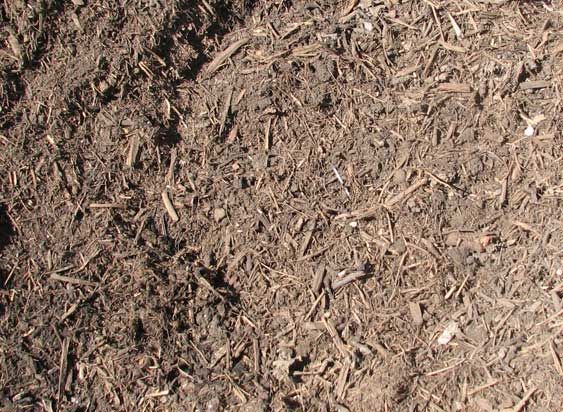
Mulching, padding or mulch is a practice both in the field and in gardening whose main objective is to protect and nourish the soil during the planting period, thus trying to generate a constantly humid ecosystem free of agents that threaten crops. Likewise, it allows the soil to provide the nitrogen necessary for the healthy growth of crops, not to mention that it gives a natural beautification to the crops.
In general, this technique is usually performed on soils with temperate climates. It turns out to be very beneficial in the early agricultural production, since it helps in the acceleration process of the harvests, thus generating an optimization in the use of the soil. This use occurs mainly in areas where the irradiation of solar rays has a less direct impact on soils.
It allows to maintain the proper pH in the soil, directly benefiting the roots of the crops and helps enormously with the conservation of the necessary humidity.
It is recommended to use a drip irrigation system in agricultural productions that use this technique , since excessive irrigation can cause rotting of the roots of the crops.
Types of mulch or padding
The practice of mulching in agricultural production involves the creation of blankets over the seedbed.
These blankets, or mulch, can be composed of various types of materials. There are mostly organic materials, but there are also synthetic materials, as is the case of polyurethane blankets, whose use is quite common in the agricultural production of vegetables, legumes and fruits.
Organic materials
Among the organic materials for the production of mulch, we have:
- 1. Dry leaves
- 2. Straw or dry grass
- 3. Wood chips
- 4. Wood chips
- 5. Newspapers and cardboard
For this type of materials, it is recommended that the layer be not less than 8 cm, nor exceed 15 cm , depending on the proximity or distance of the rains.
Before the rains it should be thicker and after the rains thinner , to avoid both dehydration and over-hydration of the soils.
Dry leaves
This organic mantle is made from the reuse of dried leaves fallen from the trees .
Generally items are accumulated, to prevent the wind from lifting them. When wet, the dry leaves begin a natural process of decomposition, creating a mantle.
One must be particularly careful when choosing the type of leaves, since these, due to their acidity, may or may not be beneficial for agricultural production.
Likewise, the thickness of the mulching layer must be taken care of, so that it does not suffocate the earth or impede the contact of the sun.
Straw or dry grass
This mantle is made up of those derived from lawn pruning, and it is very important to dry it well, cut it and eliminate any weed seeds that may be present . Otherwise, we will create an undesirable outbreak of weeds, something completely harmful to our agricultural production.
Wood chips
This type of mulch is created from wood derivatives, mainly from places such as sawmills, barracks and carpentry workshops.
All these establishments generate this kind of waste, popularly known as sawdust. This is an excellent ingredient for organic mulching.
However, we must be careful to select the most suitable type of sawdust : pine, for example, is a wood very rich in acidifiers and turpentine, so we must study well whether our crops will be benefited by this type of organic layer.
Wood chips
Unlike sawdust , wood chips are much thicker and come mainly from the bark of trees, due to natural effects of fall, or change of the bark, or also obtained within the industrial processes of the use of wood, when tree trunks are stripped of bark.
Wood chip mulch typically takes longer to break down , giving it greater durability.
Newspapers and cardboard
This type of mulching is perhaps the cheapest and easiest to make , as people often keep stocks of newspapers and cardboard boxes.
Generally, this is done by moistening the sheets of newspaper or cardboard, interspersed with fertile soil and compost , and repeating the process several times until a medium thick layer (between eight and fifteen centimeters) is achieved, depending on the rainy season.
Before the rainy season a thicker layer is placed, and during and after this it is thinner.
Mulching made with wood shavings, (photo courtesy of morguefile.com)
Plastic sheets
Polyethylene mulch is widely used in agricultural production for its practicality, easy handling, profitability and low cost. It is used in many crops throughout different countries, becoming very popular in the cultivation of lettuce, broccoli, spinach, cauliflower, among other vegetables and legumes. It is also commonly used in the prolific growing of fruits, such as strawberries, blackberries, and raspberries.
This is placed on the bed of moist soil and helps in the acceleration of the sprouting of the crops , generating a micro greenhouse effect and producing fertile growth between small holes along the plastic sheets.
When the crops are grown, the plastic mulch blocks excess soil, helping to harvest cleaner.
Benefits of mulching in agricultural production
Among the great benefits of this technique are:
- – Help in the protection of soils for cultivation and agricultural production
- – Strengthens the pores of the earth by keeping them open, allowing control of the water levels in the soil
- – Through the reduction of evaporation processes, it helps to keep the soil moist
- – It is a natural source of food for soil microorganisms, allowing the necessary conditions for the growth of crops
- – Efficiently helps eradicate weed proliferation
- – Keeps the soil at an optimal temperature, avoiding excessive heat, thereby helping the soil moisture levels
- – Keeps crops clean and beautifies plantations
Without a doubt, the use of mulch is a great option to increase the quality of your agricultural production.